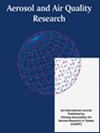Multisite Scenarios of Black Carbon and Biomass Burning Aerosol Characteristics in India
IF 2.5
4区 环境科学与生态学
Q3 ENVIRONMENTAL SCIENCES
引用次数: 0
Abstract
Black Carbon (BC) aerosols are not only substantial climate-forcing drivers but also impact human health. The spatial distribution of BC aerosols depends on the combination of anthropogenic activities and meteorological conditions. In this study, we used the India Meteorological Department (IMD) Black Carbon Observational Network datasets to assess the diurnal, seasonal, and long-term BC trends for the period, 2016–2021. The majority of the IMD’s BC monitoring stations show an overall declining trend in the BC mass concentration during the study period in India. Maximum BC concentrations are observed in the post-monsoon and winter seasons due to the stubble-burning activity and lower values of Atmospheric Boundary Layer Height (ABLH). Minimum concentrations are observed at all stations in the monsoon season due to the wet scavenging of aerosols by rain. There is a clear decrease in the BC mass concentration from winter to monsoon months and an increase in the post-monsoon months. Regional emissions from crop residue burning in the post-harvesting seasons are the main contributing factor for extremely high levels of BC mass concentration. Low wind speed and shallow mixed layer were found to be the main reasons for high levels of aerosol concentration during the winter season. There is an increasing trend in Biomass Burning (BB) at most of the stations except for Thiruvananthapuram, where a prominent decreasing trend in BC concentration is also noticed. In the present study, the impact of local meteorological parameters such as wind, temperature, rainfall and Atmospheric Boundary Layer Height on BC mass concentration is investigated. The results show a negative correlation with rainfall, relative humidity, wind speed, temperature and ABL height. Both local activity and long-range transport at each study site are also found to be responsible for the significant changes in BC mass concentration.印度炭黑和生物质燃烧气溶胶特征的多站点情景
黑碳(BC)气溶胶不仅是重要的气候强迫驱动因素,而且还影响人类健康。BC气溶胶的空间分布取决于人为活动和气象条件的结合。在本研究中,我们使用印度气象部门(IMD)黑碳观测网络数据集来评估2016-2021年期间的日、季节和长期BC趋势。在研究期间,IMD的大多数BC监测站显示印度BC质量浓度总体呈下降趋势。由于残茬燃烧活动和大气边界层高度(ABLH)值较低,在季风后和冬季观测到最大的BC浓度。在季风季节,由于雨水对气溶胶的湿性清除,所有站点的浓度都最低。从冬季到季风月份,BC质量浓度明显减少,季风后月份则增加。收获后季节作物残茬燃烧产生的区域排放是造成BC质量浓度极高的主要因素。风速低和混合层浅是冬季气溶胶浓度高的主要原因。除Thiruvananthapuram外,大部分站点的生物质燃烧(BB)呈增加趋势,其中BC浓度也有明显的下降趋势。本文研究了风、温度、降雨和大气边界层高度等局地气象参数对BC质量浓度的影响。结果表明,与降雨量、相对湿度、风速、温度和ABL高度呈负相关。每个研究地点的局部活动和远程转运也被发现是导致BC质量浓度显著变化的原因。
本文章由计算机程序翻译,如有差异,请以英文原文为准。
求助全文
约1分钟内获得全文
求助全文
来源期刊

Aerosol and Air Quality Research
ENVIRONMENTAL SCIENCES-
CiteScore
8.30
自引率
10.00%
发文量
163
审稿时长
3 months
期刊介绍:
The international journal of Aerosol and Air Quality Research (AAQR) covers all aspects of aerosol science and technology, atmospheric science and air quality related issues. It encompasses a multi-disciplinary field, including:
- Aerosol, air quality, atmospheric chemistry and global change;
- Air toxics (hazardous air pollutants (HAPs), persistent organic pollutants (POPs)) - Sources, control, transport and fate, human exposure;
- Nanoparticle and nanotechnology;
- Sources, combustion, thermal decomposition, emission, properties, behavior, formation, transport, deposition, measurement and analysis;
- Effects on the environments;
- Air quality and human health;
- Bioaerosols;
- Indoor air quality;
- Energy and air pollution;
- Pollution control technologies;
- Invention and improvement of sampling instruments and technologies;
- Optical/radiative properties and remote sensing;
- Carbon dioxide emission, capture, storage and utilization; novel methods for the reduction of carbon dioxide emission;
- Other topics related to aerosol and air quality.
 求助内容:
求助内容: 应助结果提醒方式:
应助结果提醒方式:


